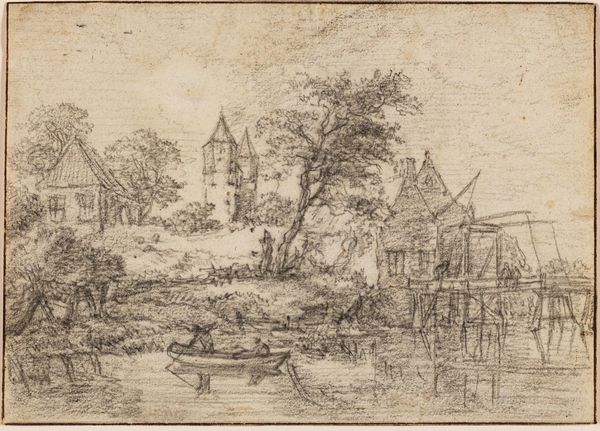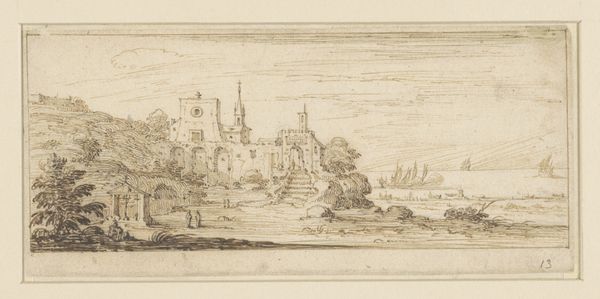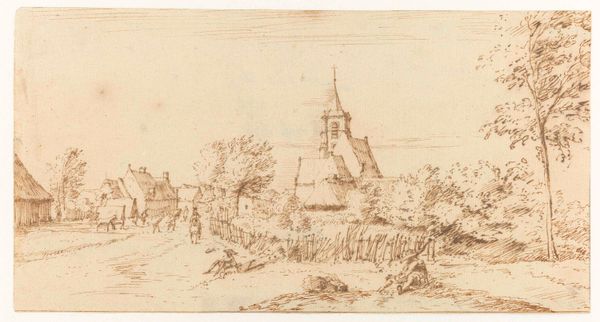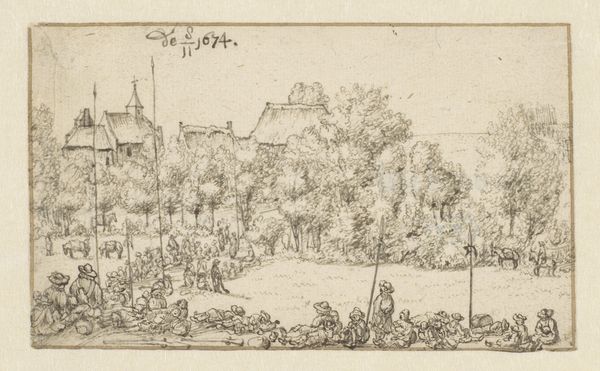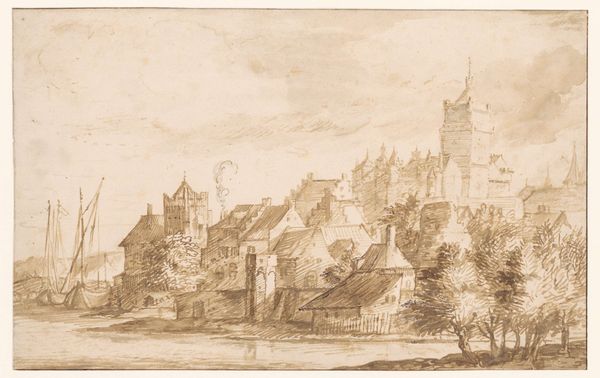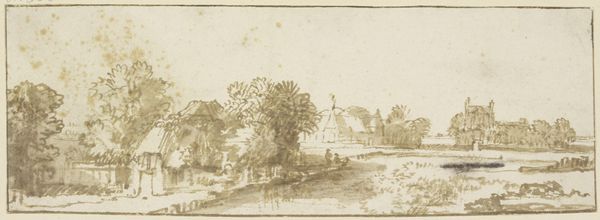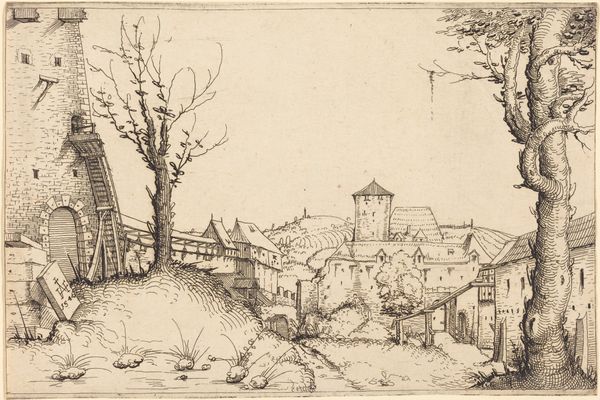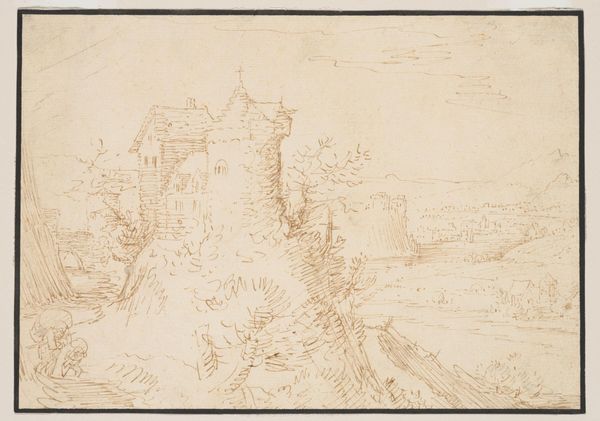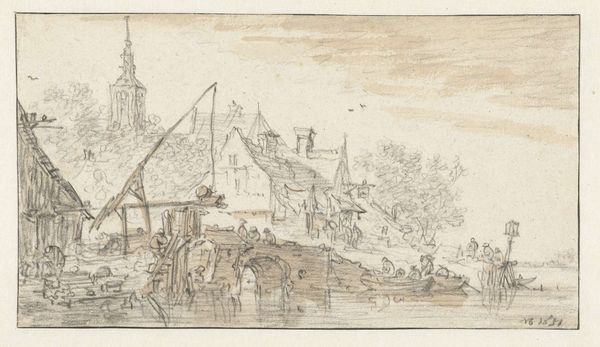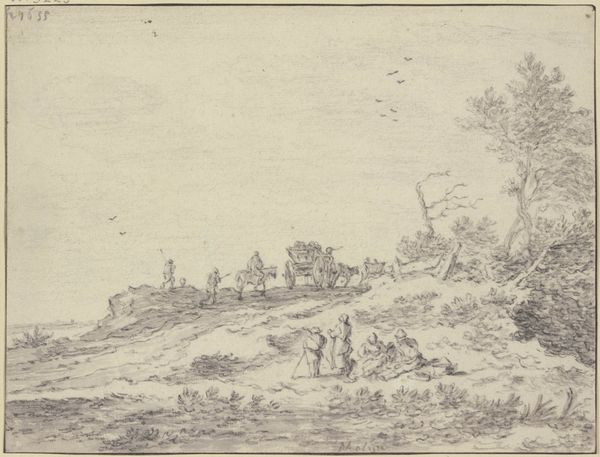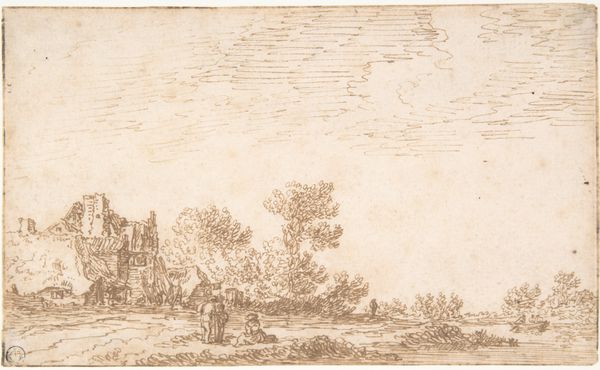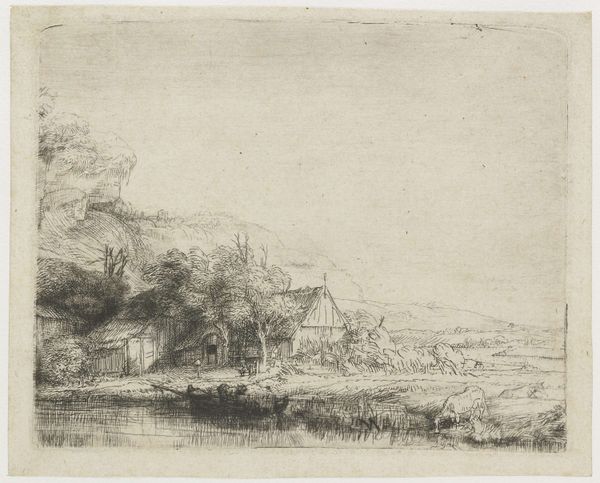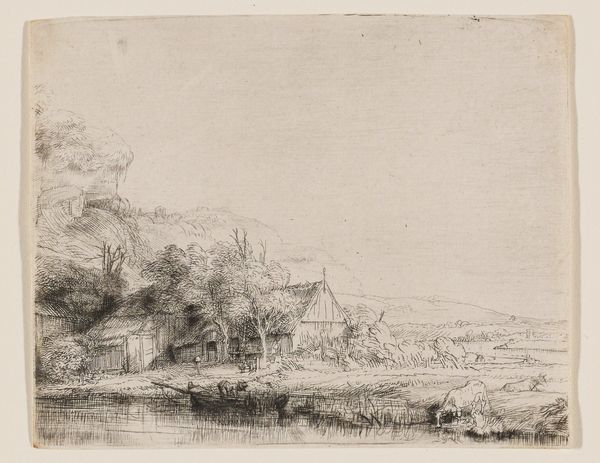
drawing, paper, ink
#
drawing
#
dutch-golden-age
#
landscape
#
etching
#
paper
#
ink
#
cityscape
Dimensions: height 181 mm, width 297 mm
Copyright: Rijks Museum: Open Domain
Editor: This is "Gezicht in Zwolle, mogelijk bij de Kamperpoort," a drawing in ink on paper by Gerrit Grasdorp, dating from 1669 to 1716. It's a rather quiet scene. What do you see in this piece? Curator: The lasting symbolic weight here lies in the tranquility captured, wouldn't you agree? A lone fisherman, two ducks drifting – archetypes of serenity juxtaposed against the rising architecture. Note how the tower asserts itself. Does it speak to you of a desire for permanence and protection amidst the daily flow? Editor: Protection, yes, certainly a feeling of enclosure within the walls of the city. Curator: Walls which tell a silent narrative of communal identity. Consider also the symbolism of the water. It reflects not just the physical structure, but perhaps mirrors a deeper, shared consciousness of the Zwolle inhabitants, their collective past and imagined future? Are the clouds adding something here, do you think, maybe transience? Editor: The clouds do make the scene more alive, reminding us that everything changes, even stone. Curator: Precisely! Even the "eternal" architecture softens under their gaze. Look at how the ink hatching almost breathes with life. How interesting the psychological comfort that these enduring symbols still offer to a contemporary eye, generations removed from their initial creation! Don’t you find it amazing? Editor: I do. It’s surprising how much feeling can be conveyed with so few lines. I had never considered how seemingly simple landscape sketches hold such complex cultural echoes. Curator: And the echoing is the truly lasting impression that art offers, isn't it? It links our perception of that time to now.
Comments
No comments
Be the first to comment and join the conversation on the ultimate creative platform.
